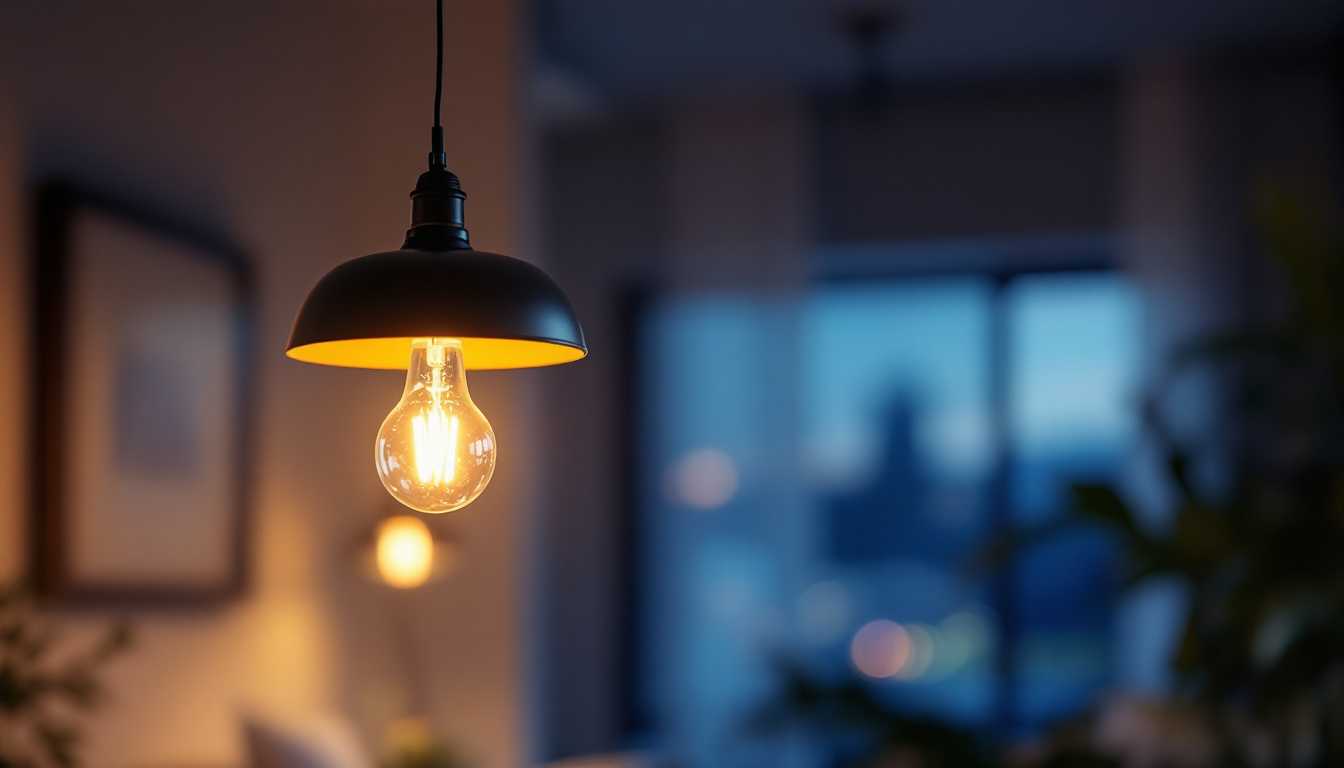
Fluorescent bulbs have been a staple in the lighting industry for decades, offering energy-efficient solutions for various applications. For lighting contractors, understanding the different lengths of fluorescent bulbs and their implications can significantly enhance project outcomes. This article delves into the various lengths of fluorescent bulbs, their applications, and how contractors can leverage this knowledge to maximize success.
Fluorescent bulbs come in various lengths, typically ranging from 12 inches to 96 inches. The length of a fluorescent bulb not only affects its light output but also its suitability for specific applications. Knowing the standard lengths and their corresponding uses is crucial for lighting contractors aiming to provide the best solutions for their clients.
The most common lengths for fluorescent bulbs include 2 feet, 3 feet, 4 feet, and 8 feet. Each of these lengths serves different purposes and fits into various fixtures. For instance, the 4-foot bulb is one of the most widely used in commercial and industrial settings, making it essential for contractors to stock these sizes for flexibility.
In addition to these standard lengths, there are also compact fluorescent bulbs that are shorter and designed for specific fixtures. These bulbs are often used in residential settings or areas where space is limited. Understanding the full range of options allows contractors to better meet client needs. Moreover, the advent of LED technology has led to the development of hybrid bulbs that can fit into traditional fluorescent fixtures while providing enhanced energy efficiency and longer lifespans, making them an attractive option for modern lighting solutions.
When selecting the appropriate length of fluorescent bulb, contractors must consider the specific application. For example, in a warehouse setting, longer bulbs may be preferred to illuminate larger areas effectively. Conversely, in retail environments, shorter bulbs may be utilized to create focused lighting effects that highlight products.
Additionally, the layout of the space plays a crucial role. The distance between fixtures and the height of the ceiling can influence the choice of bulb length. A thorough assessment of the environment will aid in making the best decisions for lighting solutions. It’s also important to consider the color temperature of the bulbs, as this can significantly impact the ambiance of a space. Warmer tones may be more inviting in a restaurant, while cooler tones can enhance productivity in an office. Understanding these nuances allows contractors to tailor their lighting designs to not only meet functional needs but also to create the desired atmosphere for any given setting.
The length of a fluorescent bulb can significantly impact its performance, including brightness, energy efficiency, and lifespan. Understanding these factors is essential for lighting contractors who want to provide optimal solutions for their clients.
Generally, longer fluorescent bulbs produce more light than shorter ones. This is due to the increased surface area that allows for a greater amount of phosphor coating, which in turn generates more lumens. For contractors, this means that when a project requires high illumination levels, opting for longer bulbs may be the best choice.
However, it is important to balance brightness with energy consumption. While longer bulbs may provide higher light output, they also consume more energy. Contractors should evaluate the specific lighting needs of each project to determine the most efficient bulb length.
Moreover, the type of environment where the bulbs are installed can also influence the choice of length. For instance, in commercial spaces such as warehouses or large retail stores, longer bulbs can illuminate vast areas effectively, reducing the number of fixtures needed. This not only enhances the overall aesthetic but also minimizes installation and maintenance costs. In contrast, shorter bulbs might be more suitable for residential settings or smaller offices, where a softer, more focused light is often preferred.
Energy efficiency is a critical consideration for both contractors and clients. Fluorescent bulbs are generally more energy-efficient than traditional incandescent bulbs, but the length of the bulb can further affect energy consumption. Longer bulbs may lead to higher energy costs, especially if they are not necessary for the application.
Contractors should conduct a cost-benefit analysis when selecting bulb lengths. This analysis should consider not only the initial cost of the bulbs but also the long-term energy savings. By providing clients with comprehensive information, contractors can help them make informed decisions that align with their budgets and sustainability goals.
Additionally, advancements in fluorescent technology have introduced options such as high-efficiency and eco-friendly bulbs, which can further enhance energy savings. These modern bulbs often have longer lifespans and reduced environmental impact, making them an attractive option for clients looking to minimize their carbon footprint. Contractors should stay updated on these innovations to offer the best possible solutions and educate clients on the benefits of investing in energy-efficient lighting systems.
The installation process for fluorescent bulbs can vary based on their length. Understanding these differences is essential for lighting contractors to ensure a smooth and efficient installation process.
One of the primary considerations when installing fluorescent bulbs is fixture compatibility. Not all fixtures are designed to accommodate every length of bulb. For example, a 4-foot bulb will not fit into a fixture designed for 2-foot bulbs. Contractors must ensure that the chosen bulb length aligns with the existing fixtures or recommend fixture upgrades when necessary.
Additionally, the type of ballast used in the fixture can also affect compatibility. Some fixtures may require specific ballasts to operate certain lengths of bulbs effectively. Being knowledgeable about these requirements can save contractors time and prevent potential issues during installation.
Safety is paramount when handling and installing fluorescent bulbs. Longer bulbs can be more cumbersome and may require additional care during installation to avoid breakage or injury. Contractors should always follow safety guidelines and use appropriate tools and equipment when working with longer bulbs.
Moreover, it’s essential to educate clients about the proper handling of fluorescent bulbs, especially regarding disposal. Many fluorescent bulbs contain small amounts of mercury, which necessitates careful disposal to prevent environmental contamination. Providing clients with this information showcases a contractor’s commitment to safety and environmental responsibility.
The lighting industry is constantly evolving, and staying updated on trends can provide contractors with a competitive edge. Understanding current trends in fluorescent lighting can help contractors make informed decisions about the products they offer and the services they provide.
One of the most significant trends in the lighting industry is the transition from fluorescent to LED lighting. While fluorescent bulbs have been popular for many years, LEDs are gaining traction due to their superior energy efficiency, longer lifespan, and decreasing costs. Contractors should be aware of this shift and consider how it may impact their business.
Although LED technology is becoming more prevalent, there are still applications where fluorescent bulbs remain the best choice. For instance, in certain industrial settings, fluorescent lighting may provide the necessary brightness and color rendering that LEDs cannot match. Understanding these nuances allows contractors to provide tailored recommendations to clients.
Another emerging trend is the integration of smart technology into lighting systems. Smart fluorescent lighting solutions allow for greater control over lighting conditions, including dimming, color temperature adjustments, and remote operation. Contractors who are knowledgeable about these technologies can position themselves as leaders in the industry.
Implementing smart lighting solutions can enhance energy efficiency and provide added convenience for clients. As more clients seek advanced lighting options, contractors who embrace these technologies will be better positioned to meet evolving demands.
To maximize success in the competitive field of lighting contracting, professionals must continuously enhance their knowledge and skills. Understanding the intricacies of fluorescent bulb lengths is just one aspect of providing exceptional service.
Investing in ongoing education and training is crucial for lighting contractors. Staying informed about the latest technologies, industry standards, and best practices ensures that contractors can offer the best solutions to their clients. Many organizations offer workshops, webinars, and certification programs focused on lighting technologies.
Additionally, networking with other professionals in the industry can provide valuable insights and foster collaboration. By engaging with peers, contractors can share experiences and learn from one another, ultimately enhancing their service offerings.
Successful lighting contractors understand the importance of building strong relationships with clients. Effective communication and transparency are key components of this process. By taking the time to understand a client’s specific needs and preferences, contractors can tailor their recommendations accordingly.
Furthermore, providing exceptional customer service can lead to repeat business and referrals. Contractors who prioritize client satisfaction are more likely to succeed in the long term. Regular follow-ups and check-ins can help maintain these relationships and ensure that clients feel valued.
Understanding the length of fluorescent bulbs and their implications is essential for lighting contractors aiming to maximize success in their projects. By considering factors such as brightness, energy efficiency, and installation compatibility, contractors can make informed decisions that benefit both their business and their clients.
As the lighting industry continues to evolve, staying updated on trends and embracing new technologies will further enhance a contractor’s ability to provide exceptional service. Ultimately, a commitment to education, client relationships, and industry knowledge will position lighting contractors for success in a competitive marketplace.
Ready to elevate your lighting projects with the best in class solutions? At LumenWholesale, we provide lighting contractors like you with the highest quality, spec-grade fluorescent bulbs at unbeatable wholesale prices. Say goodbye to local distributor markups and hello to a vast selection of reliable lighting options that meet rigorous industry standards. Plus, with free shipping on bulk orders, you can stock up on premium lighting without worrying about hidden fees. Don’t compromise on quality or value—choose LumenWholesale for a seamless blend of affordability and convenience. Wholesale Lighting at the Best Value is just a click away.

Discover how hanging LED lamps can transform your space by enhancing safety and efficiency in lighting installations.

Discover expert insights from top lighting contractors on the innovative Lock On Plug technology.

Discover the transformative potential of LED light strips in modern lighting design.

Discover the key factors that distinguish top lighting contractors in the retrofit can lights industry.